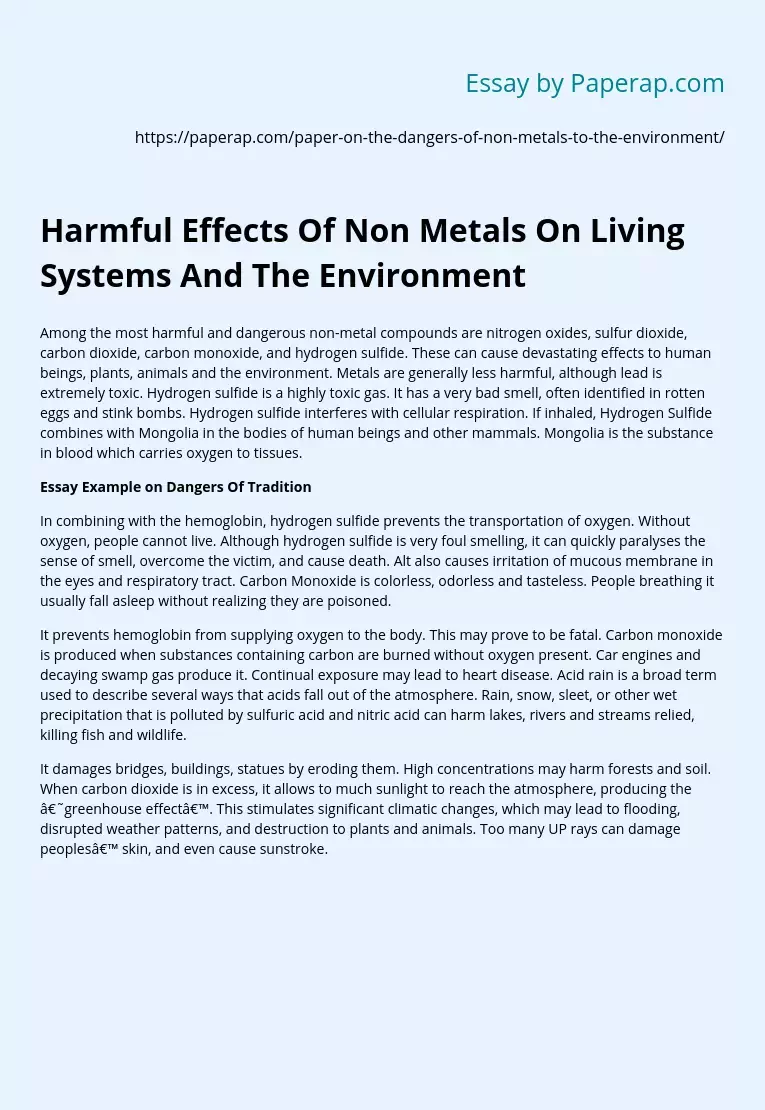Among the most harmful and dangerous non-metal compounds are nitrogen oxides, sulfur dioxide, carbon dioxide, carbon monoxide, and hydrogen sulfide. These can cause devastating effects to human beings, plants, animals and the environment. Metals are generally less harmful, although lead is extremely toxic. Hydrogen sulfide is a highly toxic gas. It has a very bad smell, often identified in rotten eggs and stink bombs. Hydrogen sulfide interferes with cellular respiration. If inhaled, Hydrogen Sulfide combines with Mongolia in the bodies of human beings and other mammals.
Mongolia is the substance in blood which carries oxygen to tissues.
Essay Example on Dangers Of Tradition
In combining with the hemoglobin, hydrogen sulfide prevents the transportation of oxygen. Without oxygen, people cannot live. Although hydrogen sulfide is very foul smelling, it can quickly paralyses the sense of smell, overcome the victim, and cause death. Alt also causes irritation of mucous membrane in the eyes and respiratory tract. Carbon Monoxide is colorless, odorless and tasteless.
People breathing it usually fall asleep without realizing they are poisoned.
It prevents hemoglobin from supplying oxygen to the body. This may prove to be fatal. Carbon monoxide is produced when substances containing carbon are burned without oxygen present. Car engines and decaying swamp gas produce it. Continual exposure may lead to heart disease. Acid rain is a broad term used to describe several ways that acids fall out of the atmosphere. Rain, snow, sleet, or other wet precipitation that is polluted by sulfuric acid and nitric acid can harm lakes, rivers and streams relied, killing fish and wildlife.
It damages bridges, buildings, statues by eroding them. High concentrations may harm forests and soil. When carbon dioxide is in excess, it allows to much sunlight to reach the atmosphere, producing the ‘greenhouse effect’. This stimulates significant climatic changes, which may lead to flooding, disrupted weather patterns, and destruction to plants and animals. Too many UP rays can damage peoples’ skin, and even cause sunstroke.
Harmful Effects Of Non Metals On Living Systems And The Environment. (2019, Nov 27). Retrieved from https://paperap.com/paper-on-the-dangers-of-non-metals-to-the-environment/

